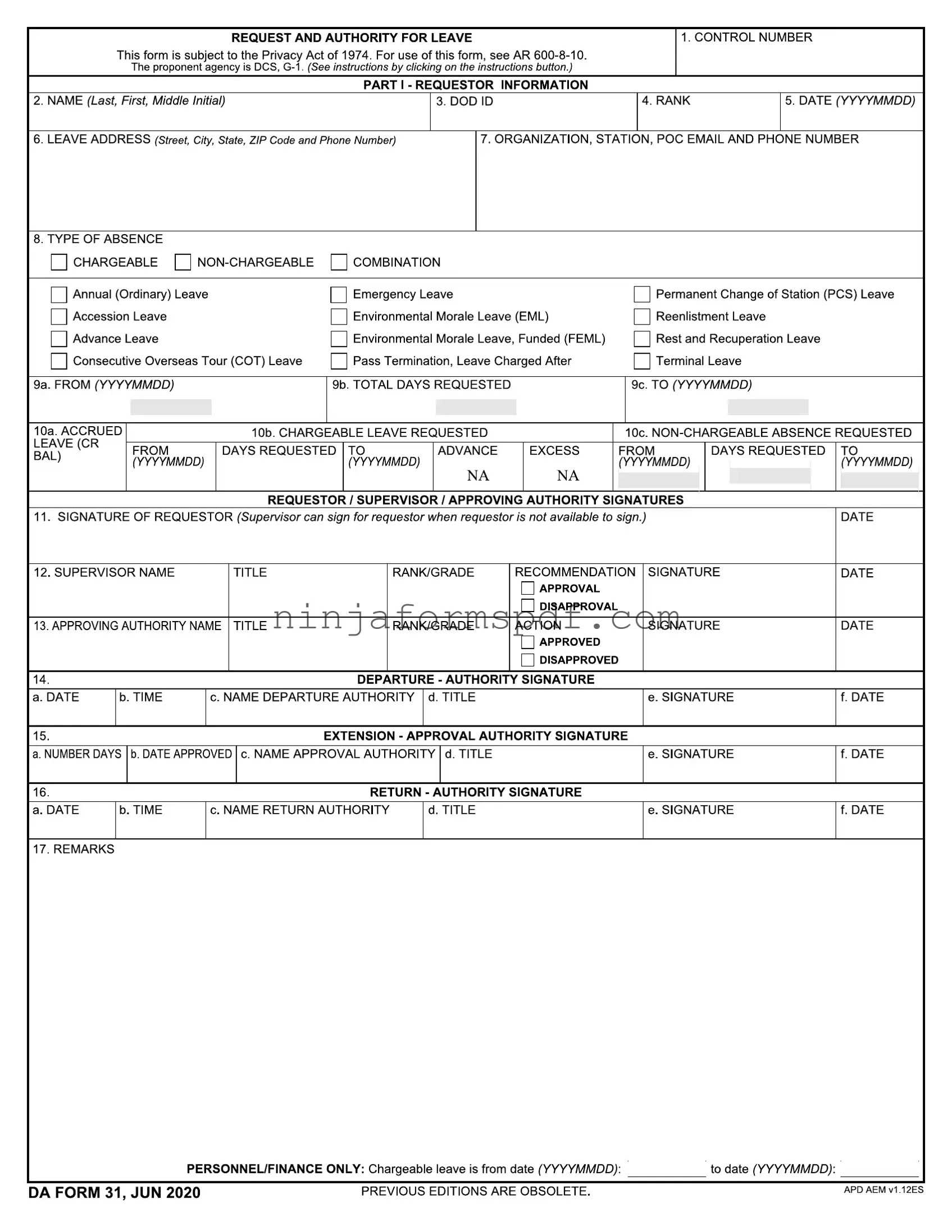The SF-52, "Request for Personnel Action," parallels the DA Form 31 in function, focusing on changes in employment status rather than leave status. Both forms share a bureaucratic foundation, requiring detailed personal and professional information to process the requested action. The SF-52 is used across various federal agencies to initiate hiring, reassignment, promotions, or terminations, mirroring the DA Form 31’s purpose of documenting and authorization in the realm of military personnel leave.
Similarly, the SF-2809, "Employee Health Benefits Election Form," aligns with the DA Form 31 by collecting critical personal details and choices that affect an individual’s status – in this case, health benefits rather than leave. Both forms act as key administrative tools, ensuring personnel’s election or request adheres to policies and affects their status accordingly. The SF-2809 allows government employees to select, change, or cancel their health insurance plans, paralleling the DA Form 31's role in managing leave entitlements and approvals.
The OPM Form 71, "Request for Leave or Approved Absence," also closely resembles the DA Form 31, with both serving to formally request time off from duty. Each form captures essential information about the requester and the specifics of the requested time off, highlighting a structured approach to managing absences across both federal civilian and military domains. The OPM Form 71 is utilized by civilian federal employees, making it a counterpart in the broader government employment context.
The DD Form 1351-2, "Travel Voucher or Subvoucher," shares the DA Form 31's attention to the administrative aspects of personnel management, specifically in the context of travel reimbursements. Both forms necessitate detailed entries concerning personal and assignment information to facilitate a particular request or claim. While the DA Form 31 focuses on leave, the DD Form 1351-2 deals with the financial aspects of official travel, underscoring the procedural rigors found in government documentation.
The I-9 Form, "Employment Eligibility Verification," although primarily used for verifying the legality of employment in the civilian workforce, shares the DA Form 31's attribute of documentation for compliance purposes. Both forms require personal identification details to fulfill regulatory requirements—military leave requests and employment eligibility, showcasing routine documentation's significance in organizational operations.
The Leave and Earnings Statement (LES) provided to military personnel resonates with the DA Form 31's theme of entitlement and utilization of leave. The LES outlines an individual’s pay, entitlements, deductions, and leave status, including accrued leave days, thus complementing the DA Form 31 by detailing the outcomes of leave requests and their impact on personnel’s earnings and leave balances.
The W-4 Form, "Employee's Withholding Certificate," while focused on tax withholdings, shares procedural similarities with the DA Form 31, especially in gathering personal information that influences individual status—tax withholdings for the W-4 and leave status for the DA Form 31. Both forms serve as essential bureaucratic steps in managing personal circumstances that impact financial or duty status within a regulated framework.
Finally, the “Record of Emergency Data,” often a part of the service member’s personnel file, parallels the DA Form 31 in its role of recording critical personal information for administrative purposes. This document, essential for contacting next of kin in emergencies, requires up-to-date factual data, akin to the necessity of accurate information on the DA Form 31 for leave requests. Both documents underscore the importance of meticulous record-keeping in managing military personnel affairs.

